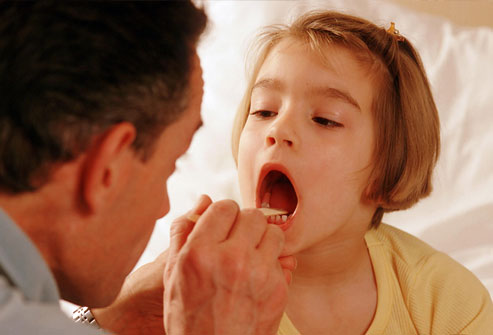Does Your Child Need Voice Therapy for Spasmodic Dysphonia?
Unless you don’t drive, unusual noises from your car are probably high up on your list of “Things You Don’t Want to Deal With.” Especially when they are the types of noises that only occur when you’re the one driving it and never when your mechanic checks it out. Just because a problem is intermittent doesn’t mean that you’re imagining it, and the same holds true for voice disorders like spasmodic dysphonia. If your child has spasmodic dysphonia, you may only notice irregular vocalizations occasionally. It’s always best to have a licensed speech-language pathologist (SLP) evaluate your child if you think there might be a problem. Voice therapy and other treatment methods can help your child if he has spasmodic dysphonia.
What Is It?
Spasmodic dysphonia is a voice disorder that involves the muscles in the larynx. A person with spasmodic dysphonia will experience spasms of those muscles, which negatively impacts the vibrations of the vocal folds. This interferes with a person’s ability to produce sound.
Signs & Symptoms
Spasmodic dysphonia is chronic and progressive, meaning that you will notice signs of it for a long period of time that will typically worsen gradually. The symptoms may also become more evident when the child is fatigued, and less apparent when the child is singing or laughing. A child may have periods of time when his voice sounds normal or almost normal, as well as periods of time when he cannot speak at all (aphonia). When he is speaking, the sound may be interrupted or the voice may sound jerky, hoarse, or otherwise abnormal. Additionally, your child might complain of a sore or dry throat.
Diagnosis of Spasmodic Dysphonia
A diagnosis of spasmodic dysphonia requires the team effort of several professionals. You might take your child to his pediatrician first. If a voice disorder is suspected, the pediatrician might give you a referral for an ears, nose, and throat specialist. This doctor will examine your child’s vocal folds during a simple procedure called fiberoptic nasolaryngoscopy. He will pass a small tube with a light through the nose to the back of the throat.
A neurologist may also examine your child to rule out any muscle movement disorders. Your child should also see a speech therapist. The speech therapist will evaluate your child’s voice quality and ask you about his symptoms.
Treatment of Spasmodic Dysphonia
Injections
There is no cure for spasmodic dysphonia, but treatment can help. Injections of botulinum toxin directly into the larynx muscles is often recommended. These injections block nerve impulses. Your child may require injections about every three to four months. Some side effects may occur, but they typically dissipate after a few days or weeks. They can include swallowing difficulties and a temporarily weak voice.
AAC Devices
Speech therapists have a range of treatment methods in their arsenals – from Speech Buddies to augmentative and alternative communication (AAC) devices. If your child has limited verbal abilities, the SLP will likely recommend an AAC device. This is any method of nonverbal communication, such as sign language or picture cards.
Voice Therapy
Voice therapy is also a frequently used treatment method for spasmodic dysphonia. Voice therapy can help your child acquire different means of voice production and reduce vocal behaviors that can be harmful. For example, your child’s SLP might teach him to use more breath support when he produces sounds. He might also benefit from proper tongue positioning.





